Tiandy TC-C34UP Bullet Camera Review
♦ Tiandy TC-C34UP Bullet Camera Review – Tiandy’s TC-C34UP Colour Maker is a 4MP bullet camera with 4 integrated 30 metre warm lights, support for tripwire and perimeter video analytics, 120dB of WDR, an IP67 rating against ingress of dust and water, a 4mm fixed lens with a fast aperture of F1.0 and compression options, including S+265, H.265 and H.264.
The TC-C34UP Colour Maker 4MP bullet camera arrived at SEN courtesy of the team at NAS Australia. This is a compact bullet camera weighing 900g, with a metal housing and an IP67 (submersible) rating. There’s strong resolution of 2560 x 1440 at 25fps. Given the camera’s fast fixed lens, I’m interested to see image quality, low light performance and to get a sense of how it stacks up against the Tiandy TC-C32GP 2MP we tested last year.
There’s a tidy specification with a couple of highlights, including the integrated warm white lights, which I rate highly in affordable surveillance cameras. There’s 120dB of WDR, a claimed 0.0002 lux minimum scene illumination from the 1/1.8th inch CMOS sensor and down to 0 lux with the integrated warm white lights activated. The fixed lens is 4mm, giving a 92-degree horizontal angle of view (beaut for the street), and that aperture is very fast at F1.0.
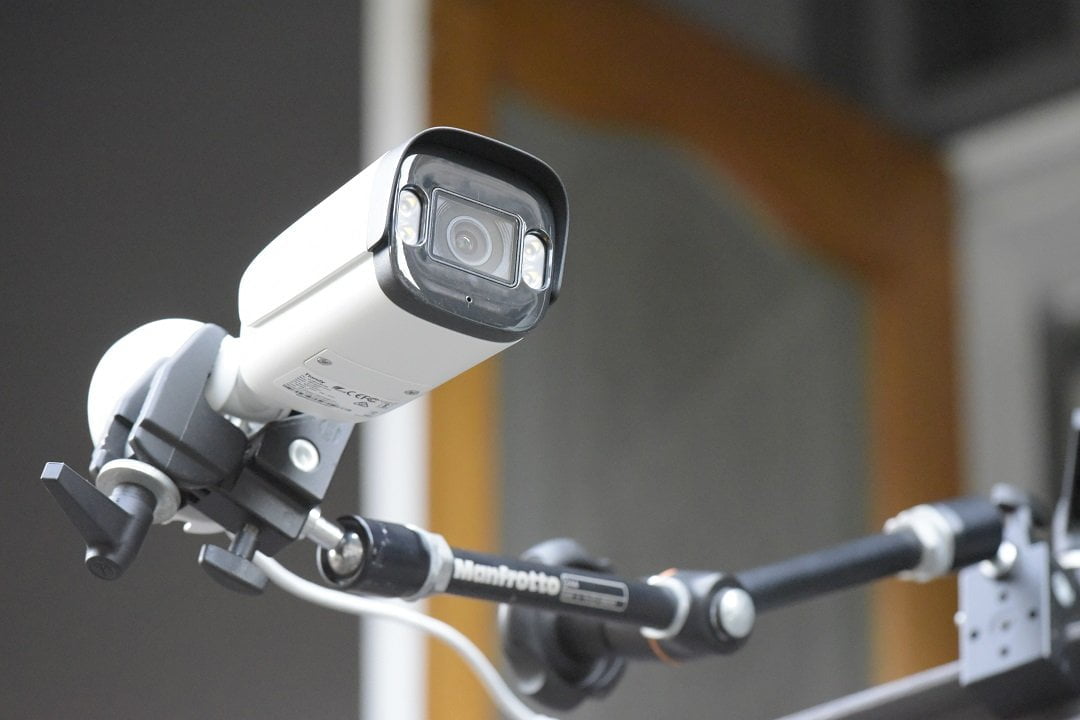
Video compression options are S+265/H.265/H.264 across 2 streams, video bit rate is settable from 32Kbps~6Mbps, audio compression options are G.711/G.711U/ADPCM with an audio bit rate of 8K~48Kbps. Image settings include saturation, brightness, contrast, sharpness, adjustable by client software or web browser (we drive using this), and there’s image enhancement with BLC/3D DNR/HLC, and OSD options as well as date and time, along with a privacy mask supporting 4 regions.
Analytics include alarm trigger, motion detection, mask alarm, IP address conflict, video analytics, tripwire and perimeter early warning. The camera will auto store video in its 512GB SD card when an NVR is disconnected then upload video when connection is resumed. There’s support for ONVIF profiles S/T/G, there’s SDK, CGI (IE) and P2P (Profile G), remote connection ≤7 and Easy7 and EasyLive clients.
Operating temperature range is strong at -40 to 60C, there’s smart defog, power consumption is 10W maximum over PoE, lightning protection, surge protection and voltage transient protection that meets EN 55035:2017.
Test Driving Tiandy’s TC-C34UP
Tiandy’s TC-C34UP has good hand feel out of the box – there’s a metal housing and the weight is 900g, so solid but not too big or heavy. This camera is IP67 rated, which means it’s 100 per cent protected against dust, sand, ash and other particles, and has been tested to operate for at least 30 minutes under 1m of water.
Resolution is 2560 x 1440 pixels at 25 frames per second and the TC-C34UP has a fixed 4mm lens with a fast aperture of F.1 – that’s as quick as any of the bigger pro-grade glass that we saw at the last SecTech Roadshow Camera Shootout a couple of years ago. We’re using the usual Dell server and viewing on a Benq 1080p LED monitor, which tends towards whiteness in its rendition.
Getting the camera set up through the browser was a very simple process and I really enjoyed using it to drive this camera. To say the browser is pared back doesn’t do it justice. Things are simple and intuitive. There’s a little tree directory on the left and finding interesting stuff like motion detection grids and mask detection is straightforward – everything is there to hand and it’s quick and easy to apply. One thing I couldn’t find, however, was the time settings, which are usually in OSD. Rather than being stuck in 1970, I turned time/date off.

As soon as I powered the camera up in the office, I got a strong sense of performance. I’d gone in and activated WDR but later on I started turning it off and on depending on my scene. Something I liked was that the setting tweaks made noticeable improvements without completely altering the look of the image – installers will know exactly what I mean.
The colour rendition is good – slightly muted with WDR activated. Resolution is good. A fixed mid-lens of 4mm with a 4MP resolution is always going to do well when it comes to resolution in the real world and so it proved to be. Focus is sharp from edge to edge, and from close in all the way through this internal scene – that’s about 8m from the lens. Looking at the images, focus looks like it goes on into the kitchen, another 3 metres, but there’s some backlight there confusing things.
With the camera hanging over the front balcony the sense of performance is enhanced. The combination of mid-length lens and mid-high resolution makes this little Tiandy bullet more than the sum of its parts. In a scene this deep – 90 metres down across Albion St, you burrow into pixel spread from around 20 metres. Within that distance, performance is very pleasing and deeper into the image, I still have solid situational awareness.
There’s a little more barrel distortion than I would expect at 4MP – it’s around 9-10 per cent – but I don’t want to criticise the lens too much because it’s doing something quite special at this price point – exhibiting zero chromatic aberration. That’s right, there’s no purple fringing at all. I went pixel peeping to find it but nothing. Nice work, Tiandy.

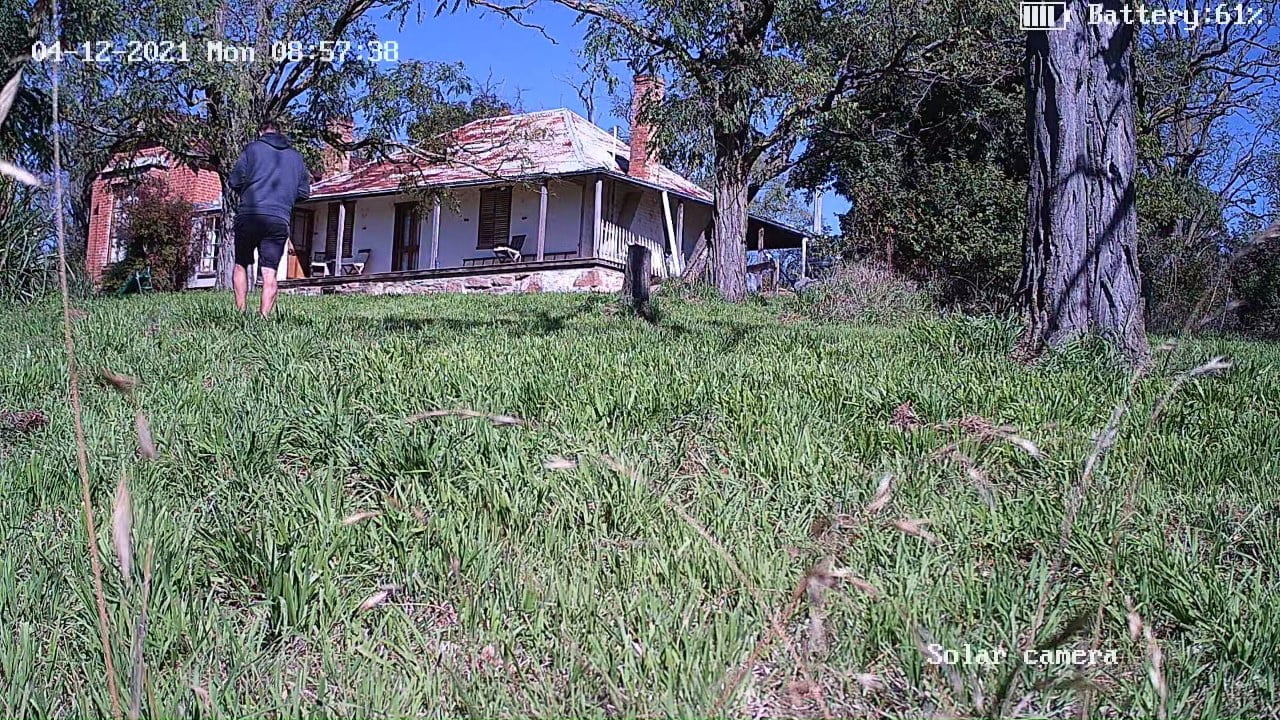
I have WDR off at this point – it’s another bright grey day in Sydney and the camera is rendering colours outside as relatively muted. I notice there are static plates to 20 metres and moving plates at the same distance but when I put WDR back on as the sun fills in, they become a little hit miss at 20 metres. Motion blur is low, latency is low – maybe 2 hundredths of a second. It’s a tight image delivering solid face identification close and quality recognition further away.
Watching a person crossing the road at about 18 metres I’ve got halfway between recognition and identification, and I’ve got loads of information around carried items, smart device, mask colour, hairstyle, shoes and all the rest of the attire. A white car goes past – I’ve got the plate at 15 metres, and it was speeding.
In another image I have a silver car 12 metres from the lens and 2 people at about 45 meters, and I’m able to get generalizations of a blue business shirt worn by one and a chap in a black work shirt, brown shorts, shoes, cap, holding a smart device. Now I have a motion detection alarm come up and there are people walking towards the camera at about 8-9 metres from the lens – face recognition with this camera is iron clad within 12 meters and extremely valuable further out. There’s no motion blur in good variable light and I’m getting great skin tones.
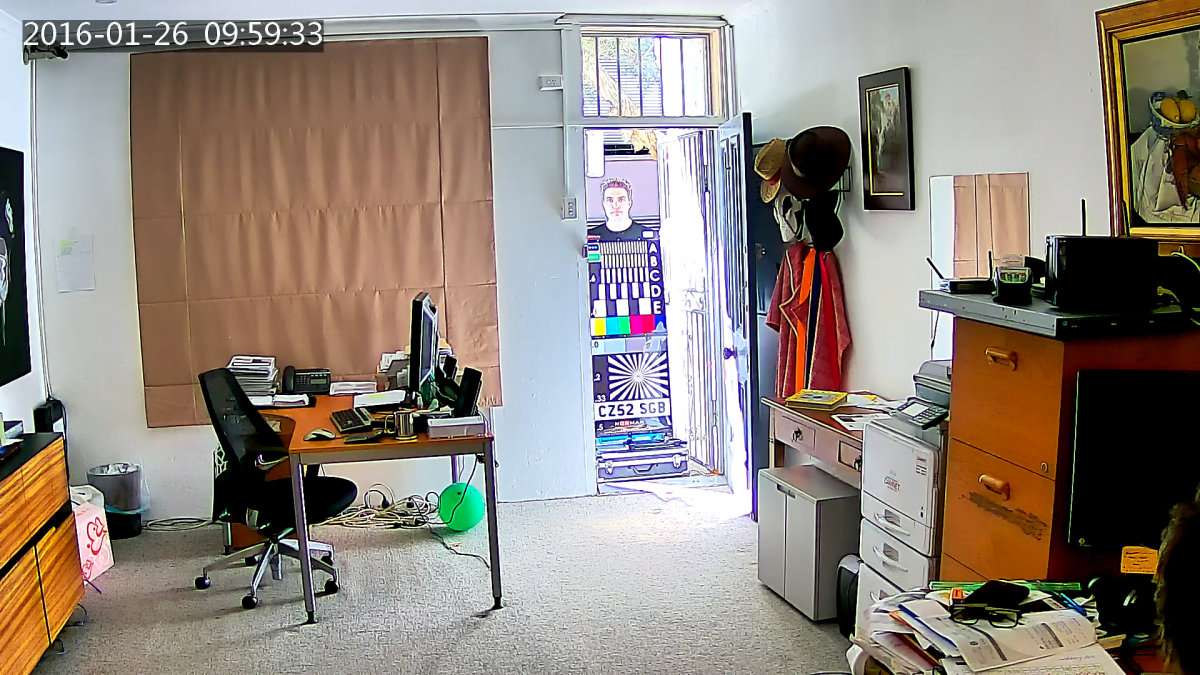
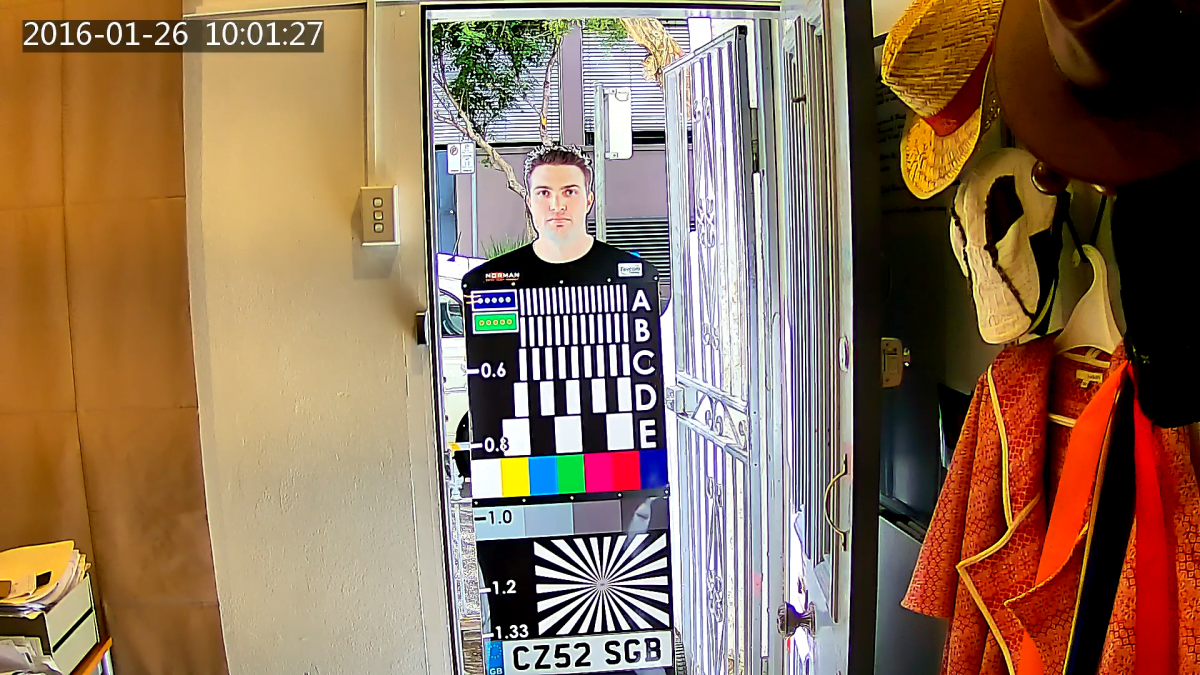
Looking at the scene generally, reds and greens are not over saturated (all my camera settings but sharpness are close to default), my depth of field is strong. I keep trying to nail down recognition depth of field and decide it goes a bit past 25 metres. Situational awareness stretches from there – excellent closer and useful deeper in. I think I can see a person all the way down across the far side of Albion Street at 90 metres. I can see nothing but head and shoulders, but I can see someone is there. A person crosses the road, about 8-10 metres from the lens in busy attire and festooned with gear. I’ve got a heap of detail of multiple carry bags, scarf, mask, hairstyle with clips and ties, overside gym boots.
Now I have very bright variable light – I measure it at 72,000 lux on the street. This is the typical variable light we have in this street scene and the camera handles it really well. Overexposure is limited. Really, I’m still not seeing any chromatic aberrations around points of high contrast from this camera at all. It’s a fixed lens so you expect CAs to be reduced, but having zero is impressive – there must be a very simple lens equation built to tight specification with low manufacturing tolerance.
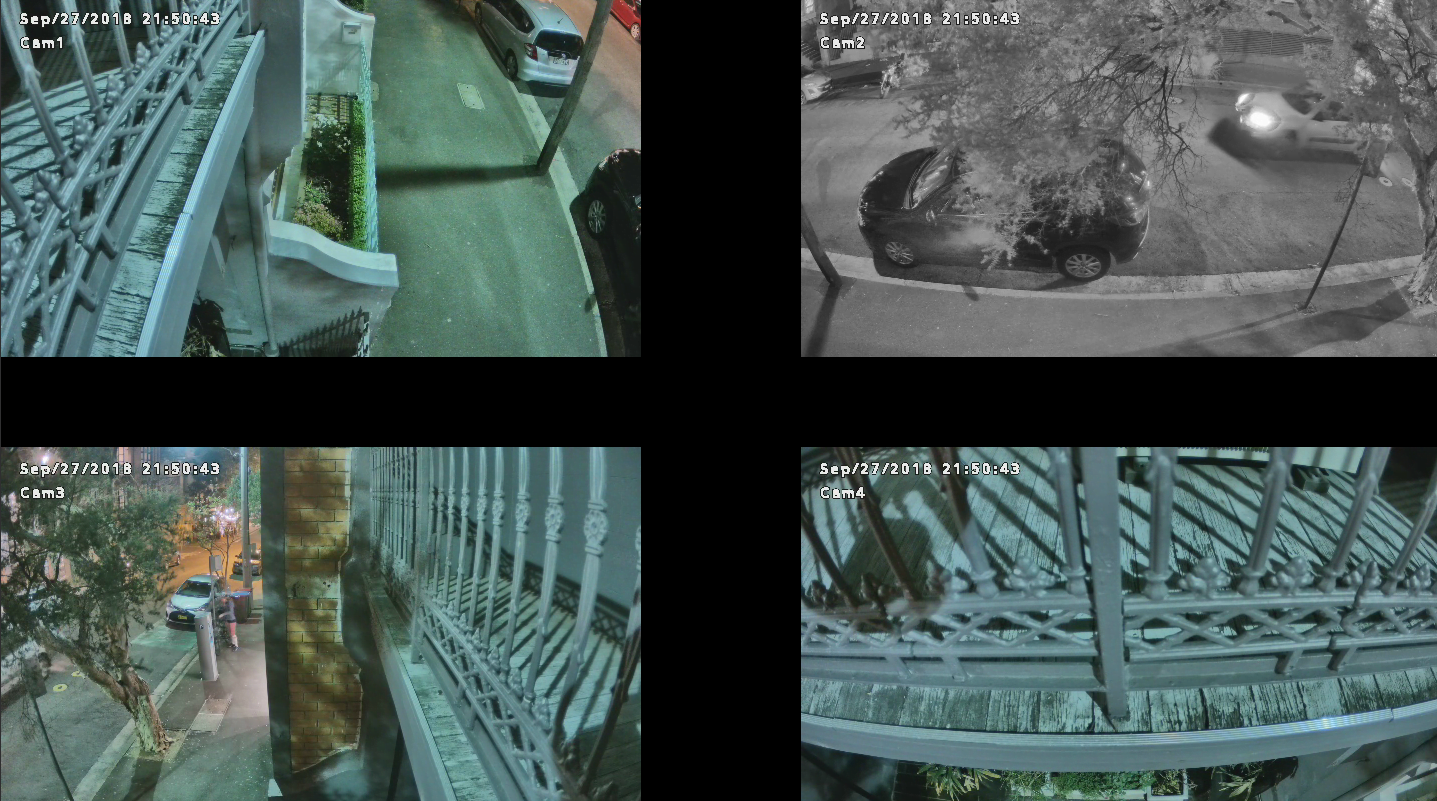

Depth of field is still good with strong backlight. A vehicle speeds past and I’ve still got the plate in a bright area. When another vehicle goes past in the shade I’m guessing at that plate. Next, the scene gets busy scene with a vehicle parking, another whizzing past and a chap walking underneath the camera. This image with stuff going on within 20 metres is very strong. That performance translates further out, too, and it highlights the value of a balance of slightly higher res and a slightly wider lens.
To do my low light test I first take the camera down into the garage – there’s a mini maglight in candle mode in the car so you can see Norman’s face but there’s no other light aside from what’s coming in around cracks in the roller door. There’s a lot of detail of bits and pieces in the garage and this highlights the value of a camera spec like this in SME applications.
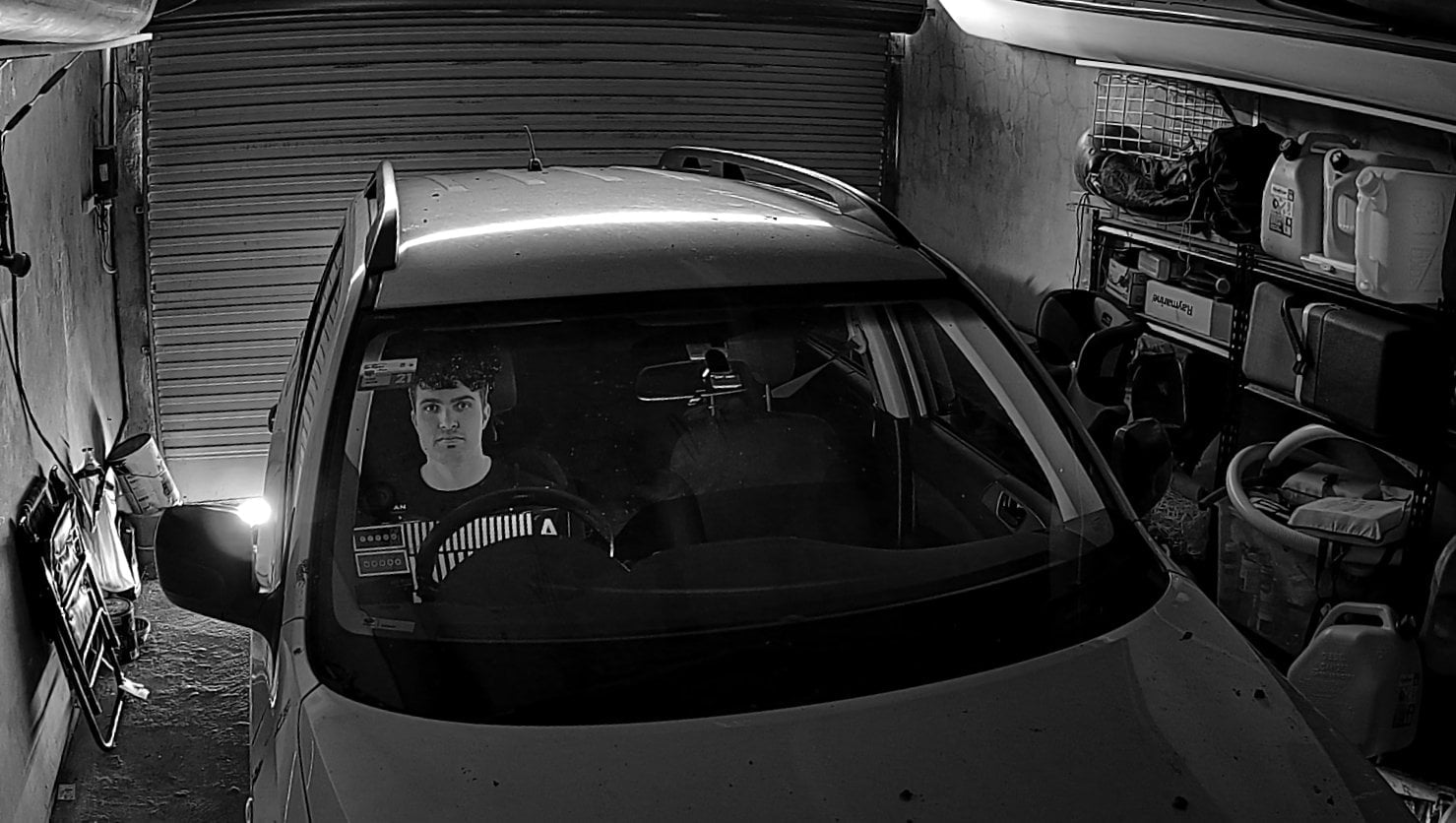
Essentially this bullet is taking all the pixels it was doing well with on the street and applying them to a scene that’s 10 x 4 metres. The result is that you’re getting stacks of information. Nothing could go on in a compact space like this that was in your field of view you wouldn’t be able to clearly see, even in poor lighting conditions like this. The camera refused to hop into colour on its own. When I push the camera into night mode, I find the black and white images is very pleasing, too.
The strong low light performance in the garage is mirrored on the street. As light levels fade colour rendition remains strong and subtle. I continue to have number plate recognition deep into the afternoon and even early evening, depending on vehicle speed. Some of the images are surprisingly sharp, considering the wide angle of view. In the late afternoon in deep shadow between the towers, face recognition, including with fast moving subjects remains extremely good. The detail is well beyond court admissible, particularly within the 12 metre range, and situational awareness and depth of field are strong at all times. Perhaps there’s a little softness out towards the edges as barrel distortion makes its presence presence felt but I’m having to look hard to find it.
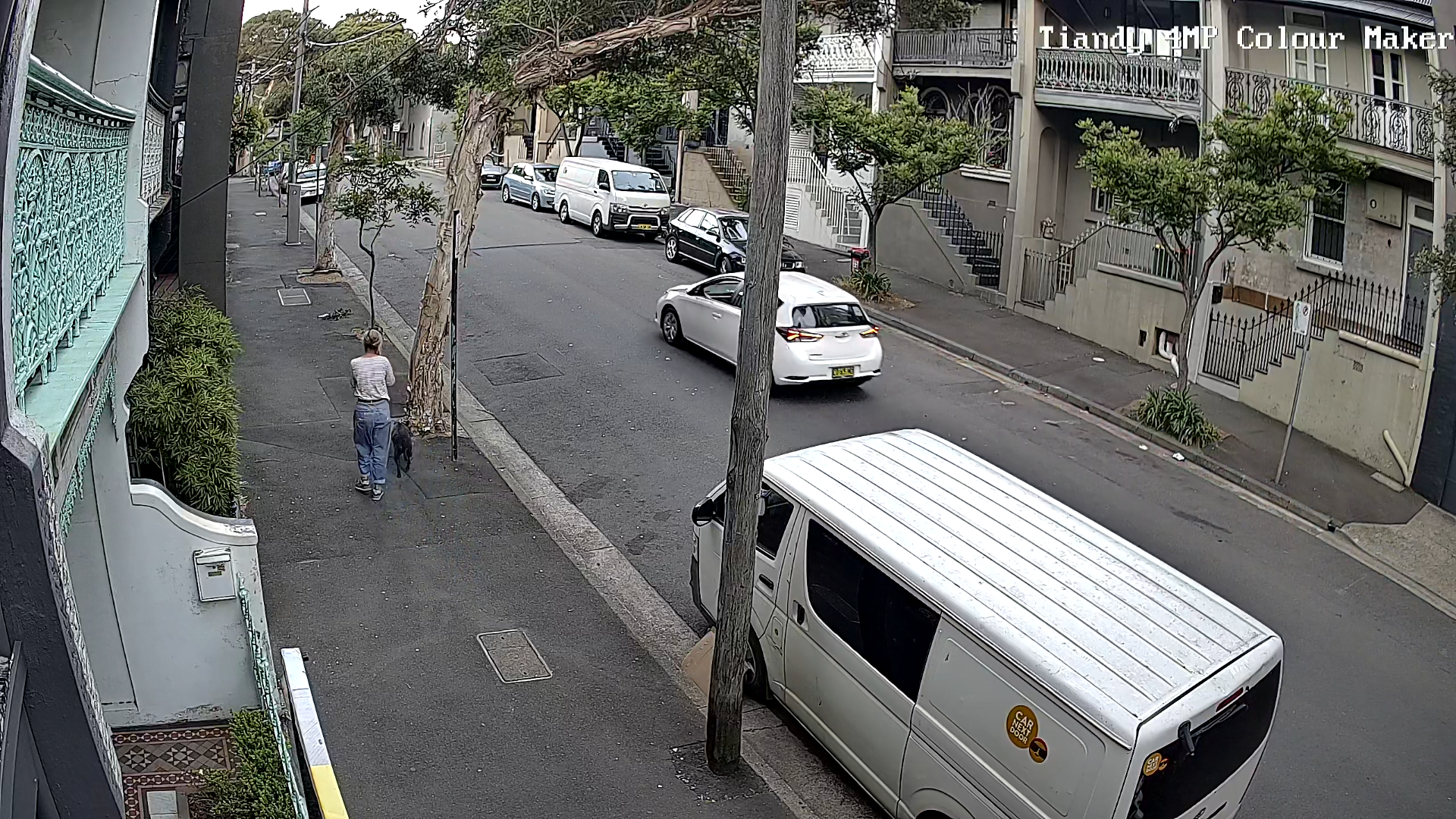
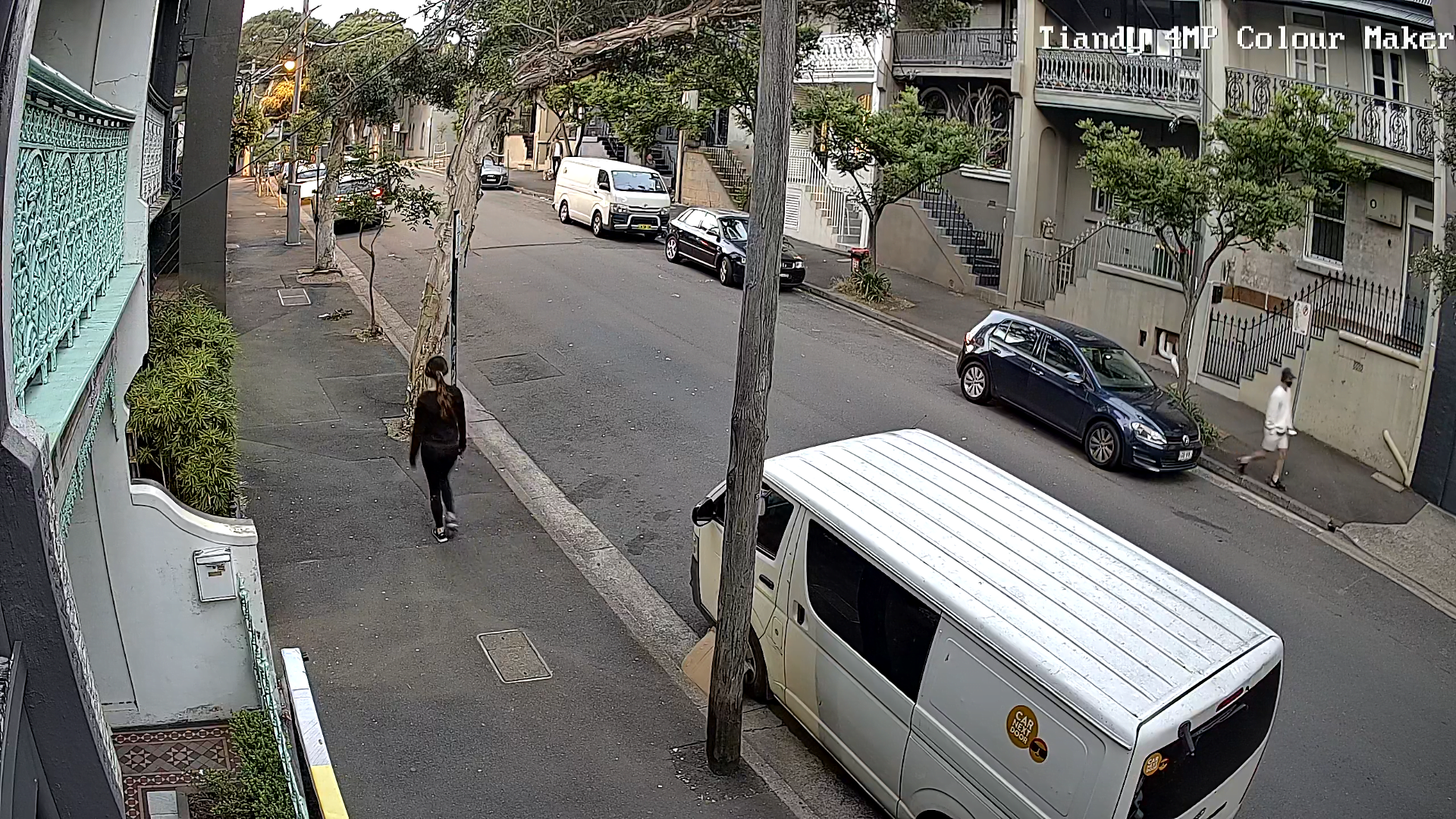
The sharpness and high contrast of this camera are real strengths. And the cameras performance when it comes to moving license plates remains exceptionally good as the afternoon wears into evening. As it gets darker this little Tiandy Colour Maker starts disconnecting from reality. I’m getting some motion blur with walking pedestrians and vehicles now but the sky remains light despite the fact it’s dark between the towers and I’m measuring sub-10 lux on the light meter. In fact, the image stream looks nothing like my reality.


Depth of field is extremely good considering this is a relatively wide fixed lens. In some scenes I have recognition of individuals on either side of the road while also being able to see considerable detail of pedestrians at 40 plus metres, including including clothing kits, carried items. As night falls, camera performance remains strong. There’s some more motion blur now, and also some tone mapping. But skin tones and detail of carried items attire remains very strong, there is slight orange color cast at the far end of the street from the low pressure sodium. The sky remains blue despite being near dark by 7.30pm. I’ve lost moving plates but still have easy recognition of vehicle, make, model, colour, and other details. Depth of field remains exceptionally good and I note that headlights don’t cause too much in the way of blooming or smearing.
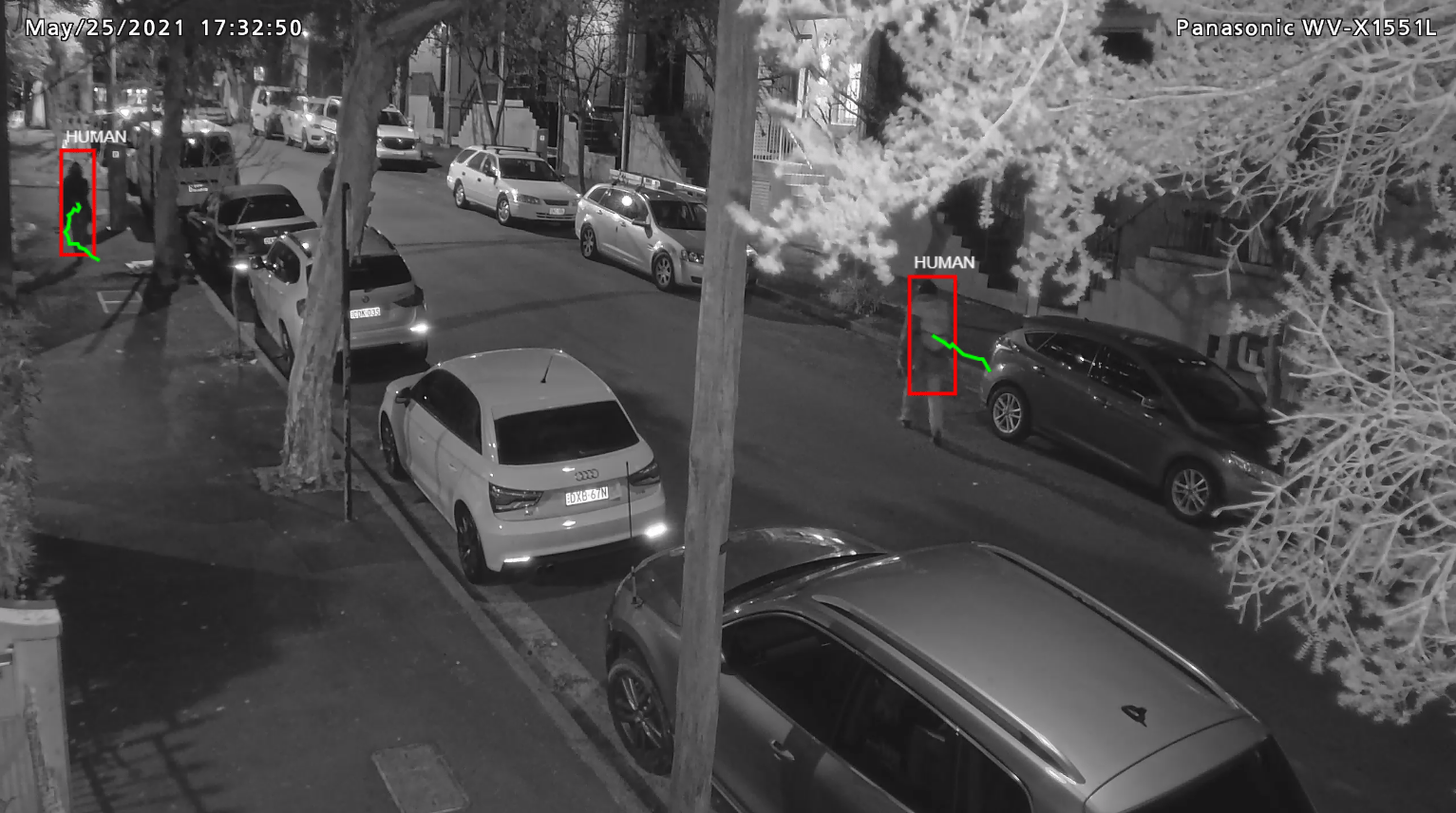
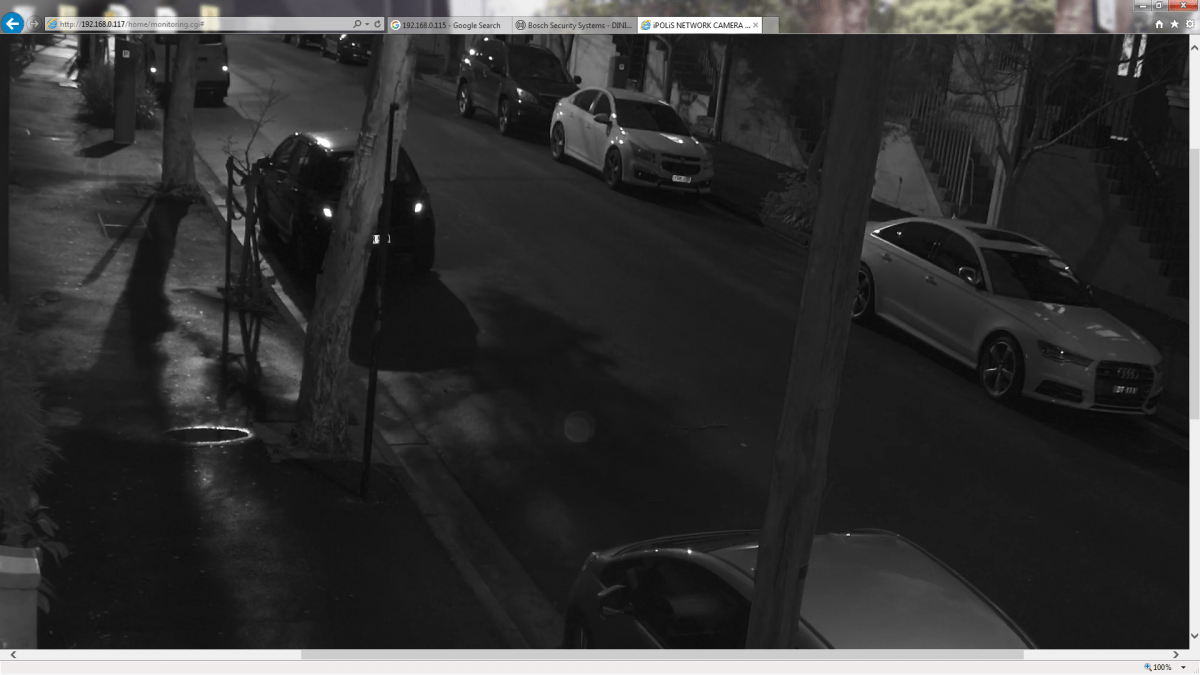
At around 8.15pm in full dark I have to force the camera over into monochrome with IR on auto but there’s too much light for the IR to activate – the warm whites don’t come on either in this light. In unsupported monochrome I don’t have plates but I’ve got strong performance around moving vehicles. This image is rendered a little darker because of my mature-aged HP’s monitor’s tendency to crush blacks – it’s the sort of scene where you immediately want to reach for the brightness slider. However, there’s good sharpness, contrast, tonal variation, tending on the dark side but still rich with detail. When two pedestrians walk past at around 830pm I get high quality court admissible face recognition. All in all it’s excellent low light performance served up with plenty of depth of field.
Conclusion
Our Tiandy TC-C34UP bullet camera review showed that what you’ve got with this compact, robust, near plug and play Tiandy MP bullet camera is an excellent and affordable surveillance tool that suits many applications. We tested a 2MP Tiandy bullet with a similar form factor last year and this is considerably better in terms of its performance. The camera is well made, and the image is well made, too. There are also some clever AI functions that would enhance operational performance in the hands of creative techs. We’d recommend this camera for applications, internal and external, where you need identification out to 15-20 metres and recognition to 25-30.
#SEN #SENnews #security #electronics








